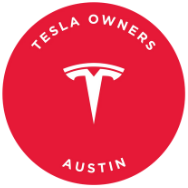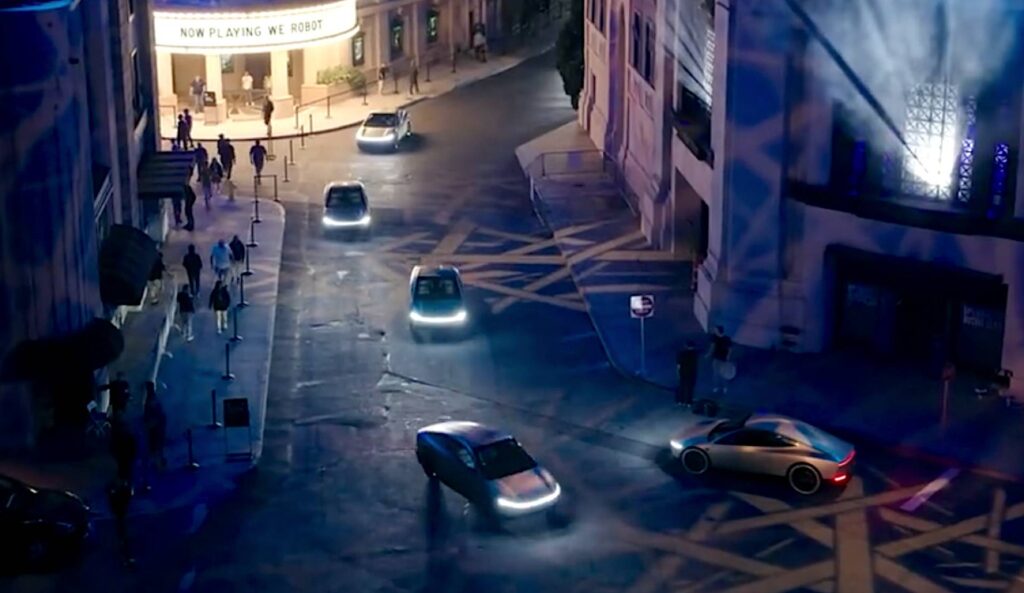- Tesla’s two-passenger Cybercab, or robotaxi, is due by 2027 and will use wireless charging
- Cybercab will cost less than $30,000, have no steering wheel or pedals
- Robovan debuted with seating for 20 and greatly reduced operating costs
Tesla CEO Elon Musk on Thursday night introduced its robotaxi dubbed the Cybercab. The autonomous electric vehicle is so locked into the evolution of Tesla’s so-called full self-driving system that it doesn’t have a steering wheel or any pedals.
Tesla may have gotten some pushback about omitting the turn signal stalk and shift lever in some of its latest vehicles, like the revamped 2024 Tesla Model 3. But it seems that Musk has his head way farther into a future where none of those controls will matter—and ubiquitous autonomous vehicles may be competing with mass transit.
“I think the cost of autonomous transport will be so low that you can think of it like individualized mass transit,” Musk said at the invite-only event from a Warner Bros. Studio set in Burbank, California.
The average cost of a bus—to run, not the ticket price—is about a dollar per passenger mile, Musk claims, while the Cybercab will probably be around 20 cents per mile in operating cost and 30 to 40 cents per mile “including taxes and everything else.”
Tesla is targeting a price below $30,000 for the Cybercab, which builds on years of Tesla robotaxi hype. Musk originally promised in 2019 to have a fleet of revenue-generating, self-driving robotaxis in operation as part of a Tesla Network in 2020.
Tesla is paving the way for a futuristic transportation experience with their Model 3 and Model Y program. Before long, customers will have the opportunity to ride in a robotic taxi, setting the stage for a revolutionary shift in the automotive industry.
Elon Musk, CEO of Tesla, reiterated the company’s commitment to autonomous driving systems, emphasizing the superior safety features of their driving computer compared to human drivers. With millions of cars serving as training data, the Tesla driving computer can process information in all directions simultaneously without fatigue or distractions. Musk envisions autonomous vehicles becoming significantly safer than human drivers, potentially saving countless lives and preventing injuries.
Tesla has faced regulatory scrutiny over their self-driving claims, leading to an official safety recall of their Full Self-Driving Beta system. Despite these challenges, Musk remains optimistic about the future of autonomous vehicles and the benefits they will bring.
In addition to the groundbreaking advancements in autonomous driving, Tesla unveiled the Robovan, a sleek and futuristic electric van designed for transporting cargo or up to 20 passengers. Musk emphasized the cost-effectiveness of the Robovan, projecting a cost of 5-10 cents per mile per passenger.
The company also introduced the Optimus humanoid robot, a next-generation innovation capable of performing a wide range of tasks, from teaching and babysitting to household chores and companionship. Musk envisions a future where individuals can have their own personal robot assistant, reminiscent of popular sci-fi characters like R2-D2 and C-3PO.
Overall, Tesla’s commitment to innovation and cutting-edge technology is evident in their latest offerings, promising a future where transportation and robotics converge to create a truly unique and exciting experience. following sentence in a different way:
The cat chased the mouse around the house.
Around the house, the cat pursued the mouse.

